Apple announces M2 silicon with even more graphs to annoy Intel
We'll have to wait a bit longer to see how Apple's new silicon runs in real-life.

Apple has just announced its next-generation Apple silicon, Apple M2. This is a new chip with enhanced CPU cores, GPU power, and a fancy new second-generation 5nm process node—totalling over 20 billion transistors in total. All of which it says once again will kick Intel's comparative chips. But of course it would say that.
If you missed all the Apple/Intel drama, long story short: Apple kicked Intel processors out of most of its laptops and replaced them with a chip of its own design, named Apple M1, back in 2020. This original M1 chip was later iterated on with the M1 Pro and M1 Max, two powerful processors in their own right but essentially chips created out of the fundamental M1 silicon.
Today, Apple has announced its second-generation silicon with some key improvements that differentiates it from the M1 silicon altogether. M2 offers up to an eight-core CPU comprised of both high-performance and high-efficiency cores, not unlike the first M1 or Intel's latest Alder Lake 12th Gen chips, however Apple says its high-performance cores are faster and come with more cache. Its high-efficiency cores are also more efficient. Neat.
And here come the 'screw you Intel' graphs. Apple has previously put some impressive (and occasionally idealistic) graphs together showing how its processors stack up against Intel and Nvidia, and it's done the same here today. At least it's only gunning for ex-bedmate Intel this time around.
Apple says the M2 is able to deliver around 120% of the performance of Intel's Core i7 1255U while using less power. It also says the chip is admittedly worse performing than Intel's 12-core Core i7 1260P but that it requires a lot less power, around 25%, to get close.
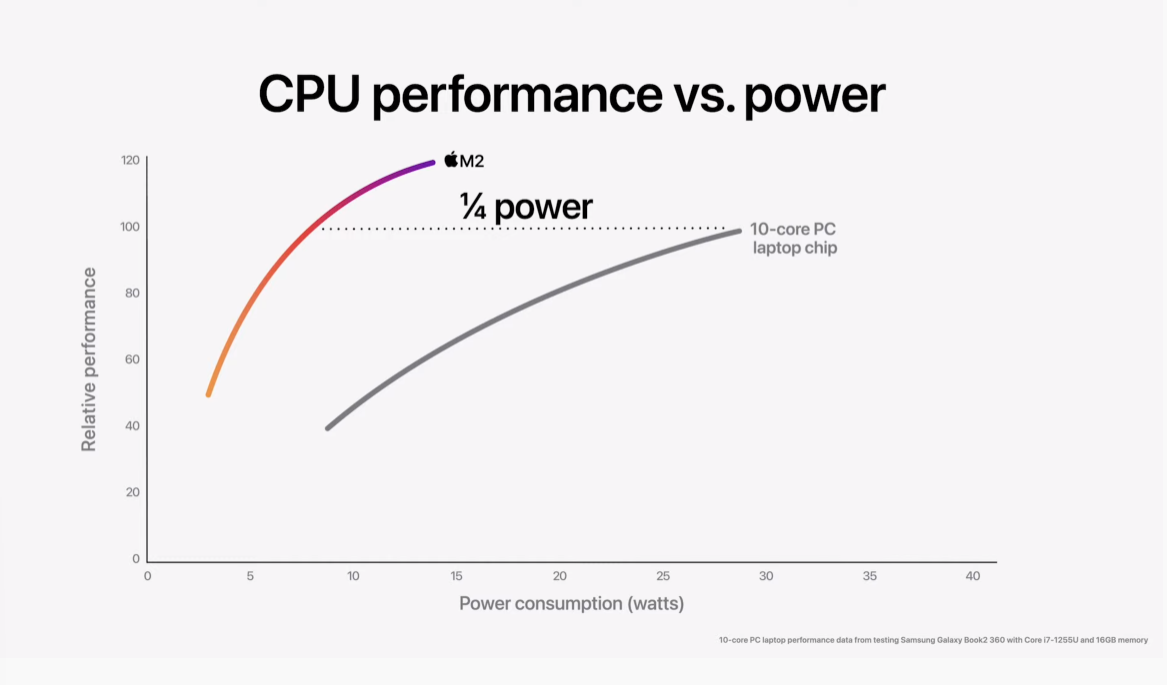
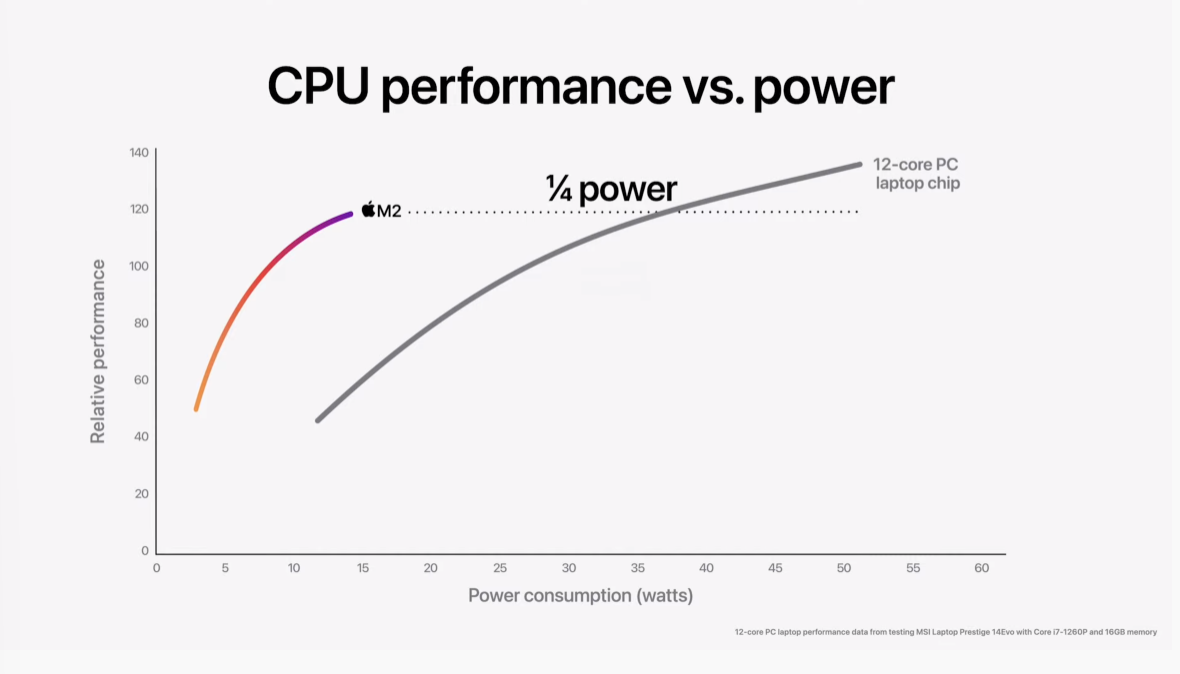
These comparisons aren't made to Intel's fastest P-series or U-series processors, and these aren't quite the same as the high-performance H-series or HX-processors we're used to seeing inside gaming laptops. We'll have to wait and see how the M2 chip faces up against those more high performance chips. That's not the comparison Apple will likely care much about, however, preferring to focus on the thinner and lighter laptop market.
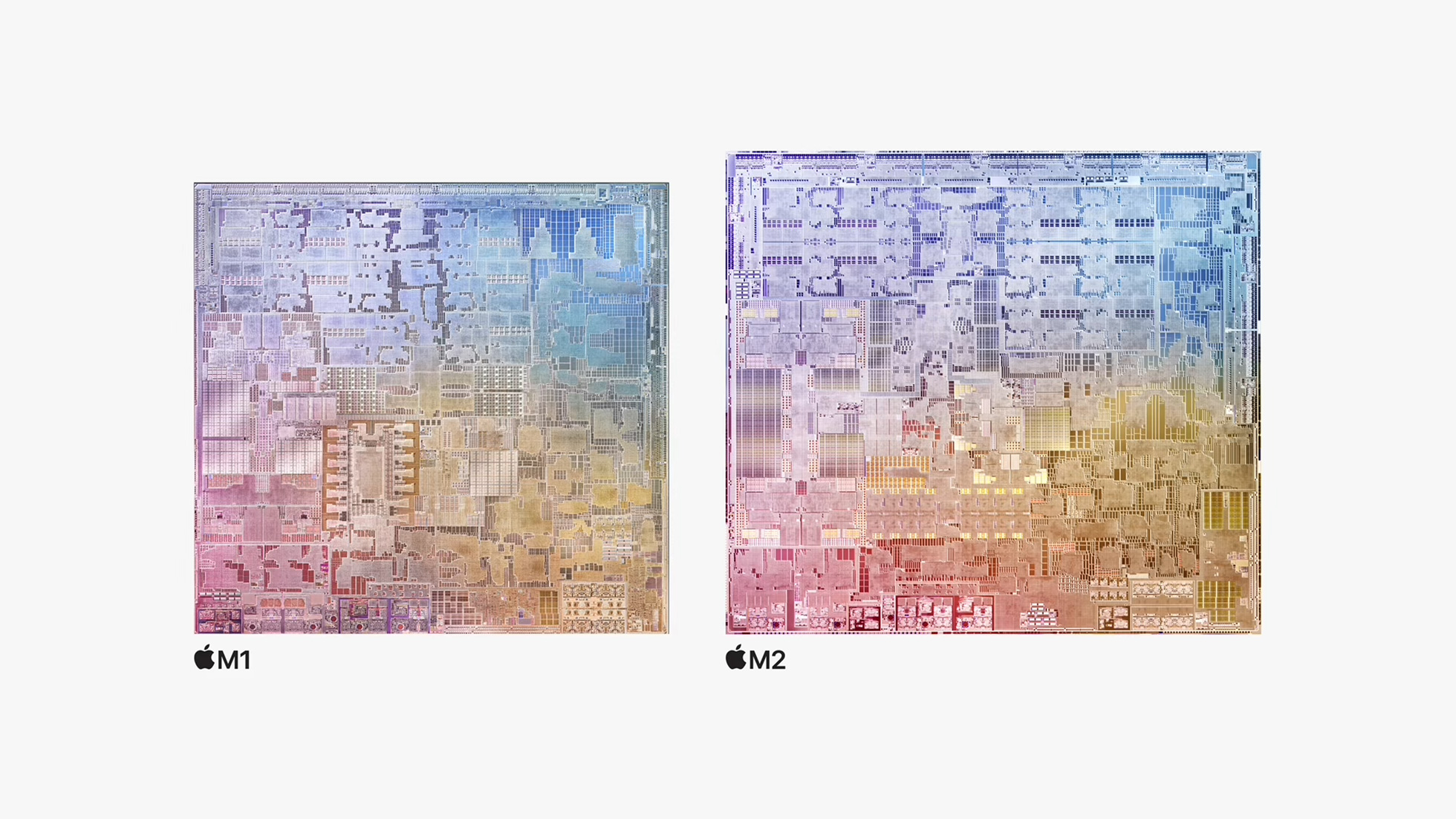
A part of M2's upgrade will no doubt be the new second-generation 5nm process node it's using for the M2, which is going to be from its firm manufacturing partner, TSMC. TSMC also manufactures all of AMD's, and some of Intel's, processors and GPUs. A smaller process node helps Apple stuff more onto its chips. Though since Apple's M1 chips also used a 5nm process node, there's not a huge amount of space likely gained. The chip definitely looks a little bigger in the pic above, but there's potentially good reason for that.
The biggest gaming news, reviews and hardware deals
Keep up to date with the most important stories and the best deals, as picked by the PC Gamer team.
Firstly, these images are not going to be exactly accurate. In fact, they're probably anything but so. Secondly, Apple is stuffing up to 10 cores of its onboard graphics onto the M2, two more than are on the M1, and that will help it kick Intel's Core i5 U-series chip in graphics performance, the company says.
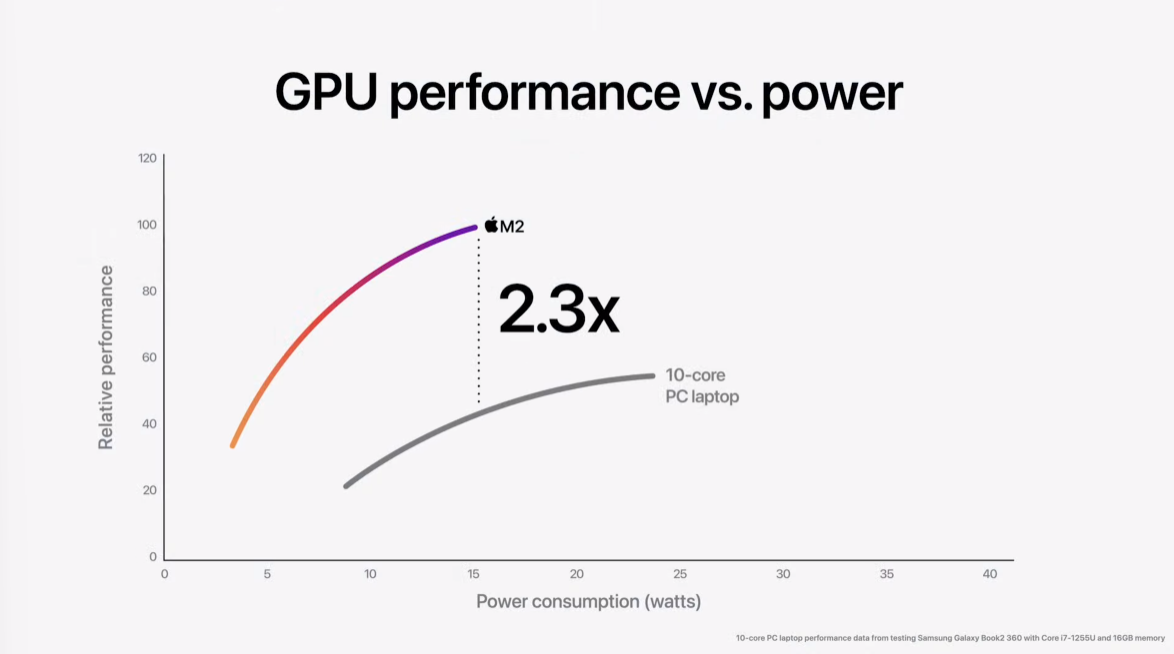
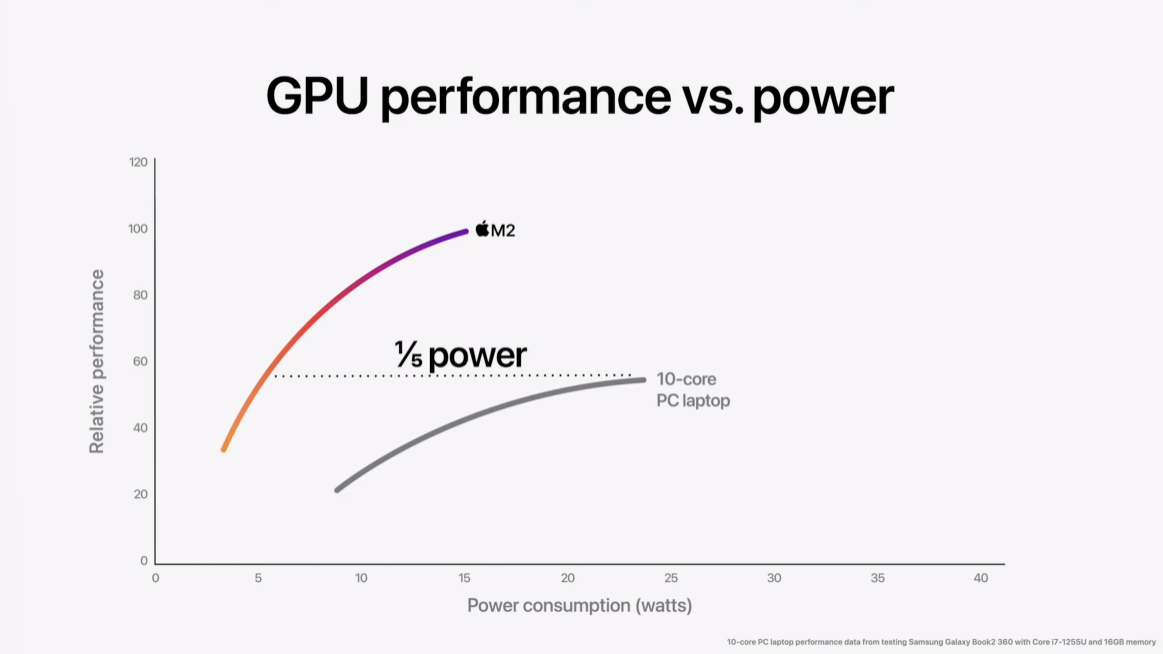
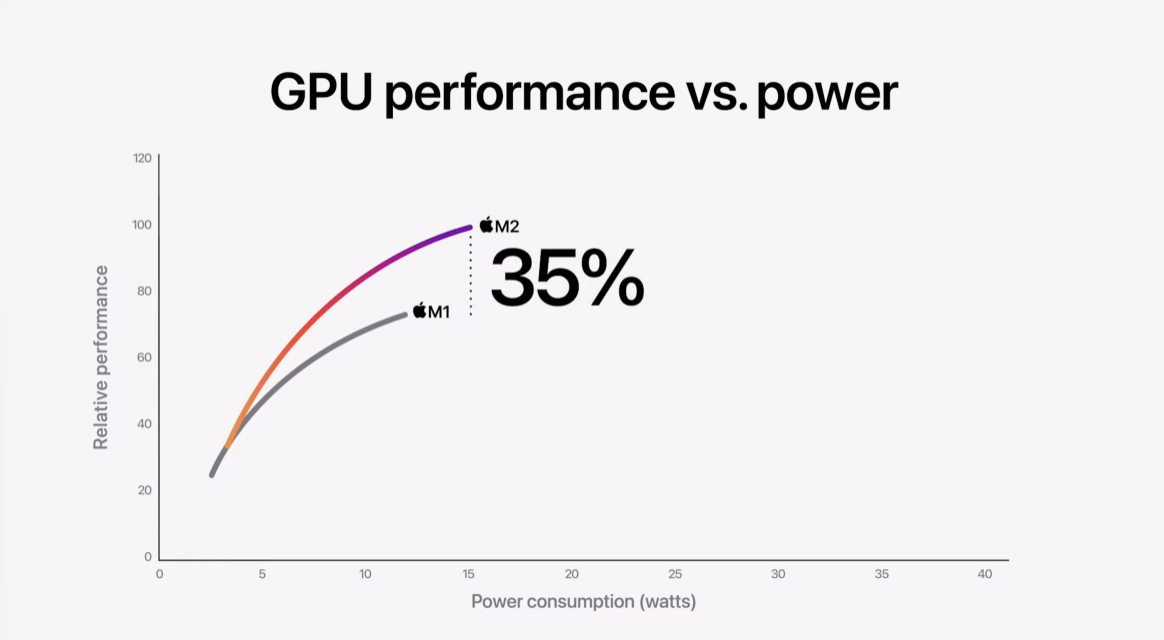
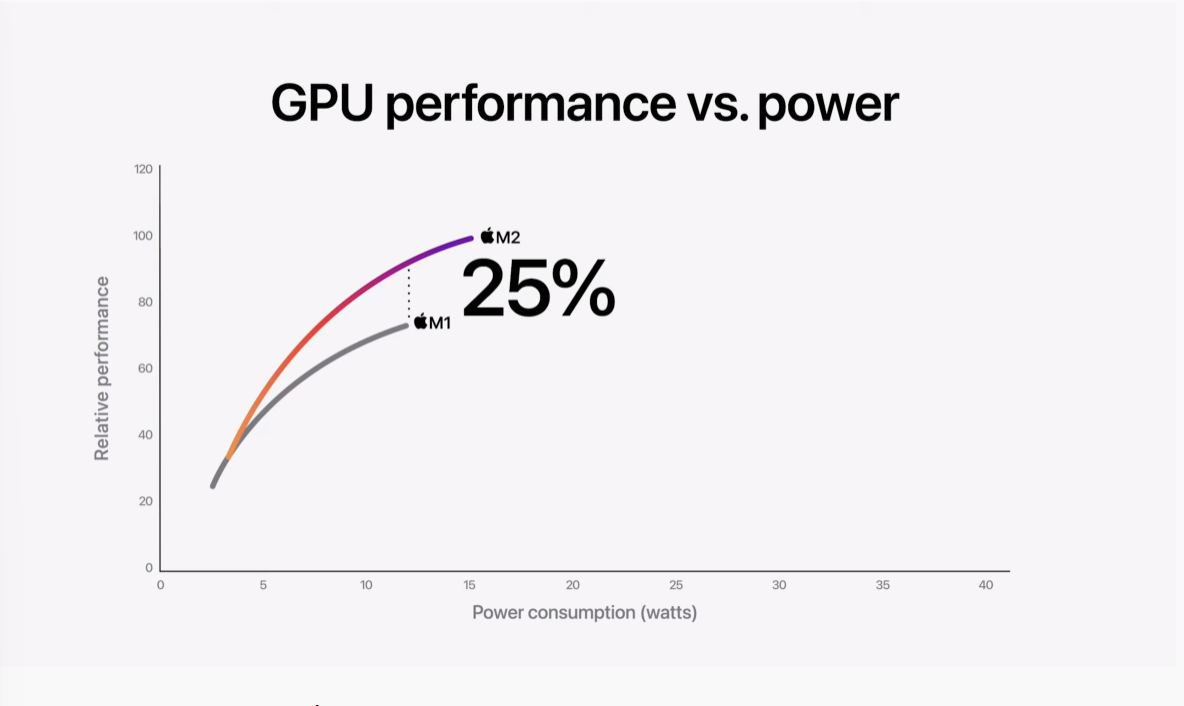
Again, though, there aren't any other comparisons made here, and Apple also isn't too keen on saying how it reached these numbers either, only that it uses "select industry‑standard benchmarks." So we're left guessing a little longer.
Apple's strong when it comes to memory, though. It offers up to 24GB of LPDDR5 and 100GB/s of memory bandwidth. There's also a new higher bandwidth video decoder that supports 8K H264 and HEVC.
All of which makes for an impressive package, no doubt, but one that we can't quite weigh up apples to apples (or oranges to oranges) just yet. That's the thing with Apple's Arm-powered silicon, it really is quite a departure from the x86 silicon designed by Intel or AMD, but rock-solid in its own right.
The M2 chip will make its way into Apple's new Macbook Air laptop and 13-inch Macbook Pro from next month.

Jacob earned his first byline writing for his own tech blog. From there, he graduated to professionally breaking things as hardware writer at PCGamesN, and would go on to run the team as hardware editor. He joined PC Gamer's top staff as senior hardware editor before becoming managing editor of the hardware team, and you'll now find him reporting on the latest developments in the technology and gaming industries and testing the newest PC components.

